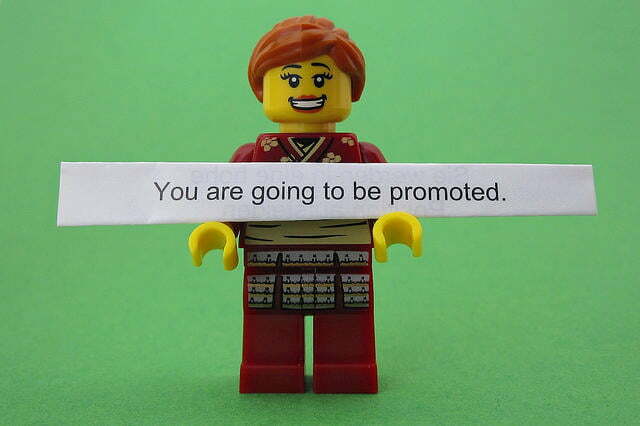Good webinars can be a little like independent movies – they leave you feeling wonderful, inspired, and ready to take on the world. Bad webinars, however, are more like Michael Bay movies – after two hours, you begin to wonder how somebody could have possibly been paid to make something so unapologetically terrible.

If you’ve ever wondered how to do a webinar that people will actually want to watch, you’ve come to the right place. In today’s post, we’re going to look at whether you should even be planning a webinar, a checklist of webinar best practices, and we’ll also learn some valuable lessons from two of WordStream’s seasoned webinar pros along the way.
Should You Even Produce a Webinar?
Believe it or not, this is a question that most marketers fail to ask before diving headlong into creating a slide deck, crafting invitation emails and all that other fun stuff.
Here’s the reason there are so many painfully boring webinars out there: many marketers don’t produce a webinar because it will be useful to their audience, but rather because it will be a great lead generation tool. Unfortunately, not all content deserves a webinar, but that never stood in the way of a determined marketer with targets to hit.

Before you start creating slides, ask yourself whether what you’re offering has genuine value. If in doubt, think about whether you would watch your webinar. You might think that everyone will be ready and willing to drop everything and enjoy your irresistible hour-long webinar on supply chain management (or whatever it is you do), but remember that most people are too busy to stop what they’re doing and watch a webinar that doesn’t interest them.
However, when done correctly, webinars can be highly beneficial to your audience and a great lead generation tool, particularly for B2B companies. Here at WordStream, we hold at least two webinars every month, and approximately 10% of our new monthly leads come from webinar registrations.
Is a Webinar a Good Fit For Your Content?
Some ideas are better suited to the webinar format than others. For example, the following would be a good fit for a webinar:
- A detailed examination of a niche topic from a fresh angle
- A panel discussion of a timely, news-based issue in your industry
- A thorough, example-driven “how-to” tutorial
- An adaptation of a presentation from a conference speaking engagement
- An interview with an industry thought leader
On the other hand, the following probably wouldn’t make for a particularly compelling webinar:
- A minor product release or update
- A news-based webinar with little or no new information/opinion
- A broad, “content thin” webinar on a general topic
- A webinar focusing on a tired idea or concept (e.g. “content is king”)
- A straight-up sales deck/product pitch
Also, it’s worth remembering that deceiving attendees with promises of sensational content, and failing to deliver (or disguising a sales pitch as useful content), is a great way to piss people off and tarnish your reputation. If you claim that your webinar is truly amazing, be sure you can live up to your own hype.
Now that you’ve settled on an idea for a genuinely interesting and useful webinar, let’s talk about how to make it happen – and potential pitfalls to avoid.
Webinar Best Practices Checklist
There are two distinct aspects of producing a webinar that you need to think about – the technical side, and the content side. Both present unique challenges, some of which are easier to solve than others.

How to Do a Webinar: Content and Planning Considerations
1. Settle on a Specific Idea
Resist the temptation to host the most epic webinar imaginable about a general topic. Instead, choose a highly specific content idea that you can go into in great detail. This will make it easier to focus on the topic and minimize the chance of going off on tangents. For example, rather than running a webinar about paid search – a vastly broad subject – focus on a specific topic, such as bid management strategies.
Choosing a topic for a marketing presentation isn’t always as straightforward as it sounds, and sometimes, things don’t go the way you think they will.

“It’s difficult to predict how the content will go over with the audience,” says Kate Gwozdz, WordStream’s Partner Marketing Specialist. “Sometimes you think you have a hit and it ends up being a total flop.”
2. Choose the Right Speakers
Webinars need to be hosted by skilled, knowledgeable experts in their field. Otherwise, how can you expect them to speak authoritatively about your chosen subject? When selecting potential presenters for your webinar, ensure that whomever you choose knows the topic inside and out, and is comfortable talking on-camera. Subject matter expertise is especially important for fielding unexpected questions, which will almost certainly happen before long.
3. Pick the Right Webinar Format
Before you start creating your slide deck (and I know how eager you are to get started), you need to decide on the right format for your chosen topic. Is your webinar going to be hosted by a single presenter? Will it be an interview Q&A-style webinar with two speakers? A panel discussion with numerous guests and a moderator? The complexity of your chosen subject, and the availability of suitably qualified speakers, should inform your choice of format.
4. Think About SEO and Promotion
Just because you’ve chosen a webinar with great content and knowledgeable speakers doesn’t mean people will be able to find it effortlessly. Once you’ve settled on an idea, think about whether your topic has solid search potential. Also consider content promotion and how you’ll publicize your webinar. Are you going to email existing customers with a link to the invite? Promote it through social media channels? What about co-marketing opportunities with trusted partners – what are they doing to promote it? These are all questions you need to ask before you start actually producing your webinar.

5. Create a Kick-Ass Slide Deck
Ever sat through a meeting in which somebody simply reads from a series of dull PowerPoint slides? Remember how boring it was? Don’t make the same mistake with your webinar slide deck. Your deck should strengthen and emphasize the points you intend to make in your script (more on this next) – it should NOT be the script itself. Back up your points with as much data and evidence as possible, and make it entertaining. Remember, your audience will either be looking at you or your slides, so don’t bore them with a dry, bland slide deck.
6. Write a Strong Script
Without a script, your webinar is almost certainly doomed to fail. Even the most skilled webinar producers and hosts rely on scripts, because talking for up to an hour, even about something you’re passionate and knowledgeable about, is hard work.

A script is your compass, map and GPS rolled into one. It will help you stay on topic, and make keeping track of time much easier. Some people find it helpful to work on their slide deck and script simultaneously to avoid repetition and minimize the risks of simply reading from their slides.

“If you’re moderating or presenting, definitely prepare yourself a script,” says Chris McHale, WordStream’s Nurture Marketing Specialist and our resident webinar warrior. “There’s a lot of logistical things to think about, so even if you think you know what you want to say, you’ll be surprised at how quickly you forget once you get into presentation mode. Create a list of the questions as they come in so you can keep them organized. Lastly, relax! It can be a bit overwhelming running your first live webinar, but just have fun with it and do your best. The attendees are there to listen and learn, not judge.”
How to Do a Webinar: Technical Considerations
7. Choose the Right Webinar Platform
There are several webinar platforms to choose from, each of which has its pros and cons. Until recently, we used GoToWebinar by Citrix. Although this is a solid choice for smaller webinars, its limitations (such as a hard limit of 1,000 attendees and lack of support for integrated content management) prompted us to look for a better solution. Now, we use GoToWebcast, another Citrix product that offers more features and allows us to host larger, more interactive webinars. The size of your company and your attendee list will dictate how robust your hosting solution needs to be. (WordStream has no relationship with Citrix beyond being a customer. Citrix did not pay for this mention – we wouldn’t be that sleazy.)
8. Test Your Campaign Tracking
Webinars can be an excellent lead generation tool, but only if you set them up properly and test your campaign tracking parameters ahead of time.
“Make yourself a checklist of the steps you need to accomplish,” says Chris. “Ask yourself questions like, ‘Do I need to set up tracking links for my offers? Is this webinar for my customers or prospects? Is the webinar live time only suitable for a specific time zone?’ Once you figure out the targeting and segmentation, you can focus on the logistical steps.”
9. Use Headset Microphones or a Land Line Phone
Few things will ruin a webinar faster than poor-quality audio. Don’t rely on built-in mics on your laptop – the resulting audio may be tinny, distorted or faint, even if you have some decent hardware. Instead, use cabled headset microphones to ensure that everything your presenters say is clear.

Alternatively, Kate recommends considering using a land line telephone. Even the most reliable internet connection can fail, and if it does, your VoIP connection will be lost, too. If you want to take an extra precautionary step, think about dialing into the webinar from a land line to be safe.
10. Run a Test Webinar
Whatever you do, don’t assume that everything will go smoothly during the live webinar without testing your equipment first. Do at least one run-through several days before the live event to make sure that everyone knows what they’re doing, and that all your gear is functioning correctly.
11. Keep Backup Batteries / Power Cables Handy
If you can’t use power cords for your hardware, ensure that not only are all laptop batteries fully charged before the broadcast, but that you have at least one spare battery on hand for each piece of equipment. Don’t run the risk of a dead or malfunctioning battery ruining your webinar!
12. Prep Your Studio Space
If you’re hosting your webinar from a home office, ensure that your kids/pets/neighbors won’t interfere or make any noise during the webinar. Alternatively, if you’re running the webinar from your office, find a quiet room with a door where you won’t be disturbed. Keep your studio space clean and free of clutter, and turn off your computer notifications, cell phone and anything else that could distract you or your audience during the webinar.

13. Enlist a Technical Assistant
During the webinar, either you or your presenters need to be focused on delivering a great presentation. The last thing you should be worrying about is technical problems. With this in mind, enlist the assistance of an assistant who can handle technical issues as they arise, moderate comments and other tasks that might derail the presenter.
14. Be Early
Ever bothered to stick around for a webinar that started late? Me neither. Make sure you’re prepared and ready to go at least 10 minutes before the webinar is scheduled to begin, or even earlier if you can. This will help get things going promptly, and can help you feel more relaxed when it’s time to begin.
15. Accept That Things WILL Go Wrong
No matter how much you prepare, things can – and WILL – go wrong. Come to terms with this, and don’t stress out too much.
“As much as you prepare yourself, there’s always hiccups that occur during the live event,” says Chris. “If they didn’t, it would get suspicious if it was even live or not. I actually had a presenter who was using his laptop to present. He didn’t plug the laptop in using the power cord and was running off the battery. We were about 10-20 minutes into the presentation when he just cut out. The laptop ran out of juice and the computer shut right off. I was moderating the presentation and had to ‘entertain’ the audience for about 10 more minutes as the presenter had to get his power cord, sign back in etc.”
Some Final Tips on Running a Webinar From Kate and Chris
It’s impossible to prepare for every eventuality when producing a webinar, but there are a few things Kate and Chris recommend doing every single time to ensure things go as smoothly as possible:
- ALWAYS do a dry run. No matter what. Even if your speakers don’t want to. Just do it.
- Don’t rely on the internet; be sure to call in from a landline instead of using the mic on your computer.
- Use poll questions to engage your audience.
- Start promoting at least 7 days in advance.
- Put presenter bios on your registration page. It adds credibility. Head shots are nice too.
- A/B test and optimize your webinar landing page and email invites.
For more webinar advice, check out our post on webinar tips we swear by.
Check Out WordStream’s Webinars
We produce at least two webinars every month, on topics ranging from advanced AdWords features to paid search strategies to help improve your ROI and lower your ad spend. To learn from WordStream’s PPC experts, including Larry Kim, check out our webinars at PPC U.







